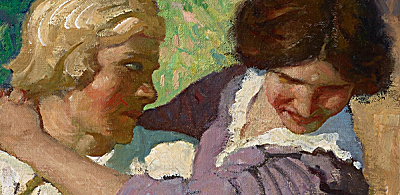Of Cheese & Pickled Sharks
Many in the arts community wonder why the general public shows so little interest in contemporary art. Perhaps it’s time for a bit of reflection and self-criticism on the part of artists, who to a certain degree are responsible for the tremendous gulf between themselves and the public.
Artists by and large have altogether ceased addressing the wider society. They prefer instead a self-imposed exile to intellectual ghettos where they speak only to each other on matters regarding pure aesthetics. Moreover, postmoderism has obliterated the idea of skill and meaning in art. Anyone can claim to be an “artist” these days—even a fool who covers a house in cheese is considered an artist. Is it really any wonder then why the general pubic pays little attention to art?
Who could better illustrate the sheer bankruptcy of contemporary art than Damien Hirst, one of the most famous names in the British art world. He admitted in a recent New York interview that he’s implemented some preposterous ideas during his career. “You do turn round after a few years and look at your stuff and you think it’s embarrassing.” Hirst is renowned for his 1991, The Physical Impossibility of Death In The Mind Of Someone Living (a large shark preserved in a vat of formaldehyde, an eyesore that a short time ago sold for $13 million). In the interview Hirst plainly stated that he thought some of his early paintings were “a bit silly.”
The troubling question is, if Hirst thinks his works are silly and embarrassing, what can be said of the art journalists and critics, gallery and museum curators, collectors and others in the art world who so willingly praised, extolled, purchased and otherwise made famous the works of Hirst?
Hirst was interviewed at the Gagosian Gallery, a New York venue currently showing his latest works. The Elusive Truth is a display of 29 photorealist oil paintings by Hirst, except that he didn’t paint a single one of them. The artworks were actually painted by an assembly line of assistants. Hirst only stepped in to add a few final brush strokes, a detail here and there, and to add the all important signature of the master.
He admits that he can’t paint, saying that “You’d get an inferior painting if it’s done by the artist.” The paintings, which have sold from $200,000 to $2 million each, are based on cheerless photos of drug addicts, suicide bombers, and hospital scenes. Prints of works in the Gagosian exhibit go for $20,000. One can only wonder what the assistants were paid.
So long as hucksterism is the dominant force in the art establishment, the general public will continue to maintain a healthy distance from the foibles and follies of the art world.




